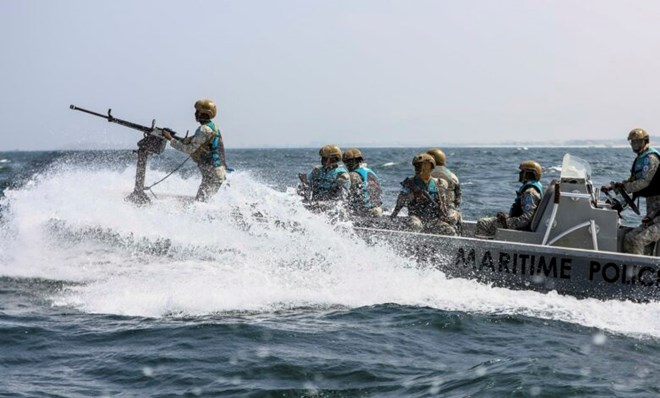
Thursday December 7, 2023
By Lucia Blanco Gracia

Garowe, Somalia, (EFE).- After three decades of war and chaos, Somalia’s future is clouded in uncertainty, as African Union (AU) troops prepare to pull out of the country amid the ongoing fight against the Islamist militant group al-Shabaab.
“The Somali army is not strong enough to protect the country,” Abdullahi Mohamed Ahmed, commander of the Maritime Police Force in the northern state of Puntland, tells EFE.
Looking out over the blue waters of the Indian Ocean, where Somalia has over 3,000 kilometers of coastline, Ahmed points to a significant decrease in piracy incidents compared to a decade ago, citing improved security in recent years.
“The Somali army needs a big change before the withdrawal of ATMIS,” Ahmad says, referring to the AU Transition Mission in Somalia.
The ATMIS mission, comprising troops from Uganda, Burundi, Kenya, Djibouti, and Ethiopia, has already withdrawn around 2,000 troops from Somalia, and is expected to complete its withdrawal by December 2024.
The ATMIS mission replaced the African Union Mission to Somalia (AMISOM) in March 2022.
AMISOM, which at its peak had around 20,000 troops, was deployed in Somalia in 2007 to support the country’s transitional government’s fight against warlords and Islamist militias vying for control of territories.
“I think (the mission) has been successful,” Omar Mahmood, Somalia analyst for the International Crisis Group (ICG) tells EFE.
He believes that every positive development in Somalia since 2007 is down to the improved security situation provided by the peacekeeping mission.
“Not only did they retake the capital, Mogadishu, but now you can also travel to any of the five federal states, at least the cities,” he added.
During the mission, largely funded by the European Union, Somalia strengthened its armed forces while simultaneously striving to build a state frequently labeled as failed by the international community.
But despite the growth in troop numbers, Somalia forces remain “unprepared” to take over the fight against al-Shabaab jihadists, who control parts of the central and southern regions, Mahmood warns.
“The general transition process will need to be longer,” the analyst says.
After years of stagnation, the fight against al-Shabaab gained momentum when President Hassan Sheikh Mohamud took office in May 2022, declaring a full-scale war against the militias in Somalia.
Through an alliance between the army and largely rural armed clan militias, the government was initially able to regain control of several areas.
However, that early momentum was slowed by significant defeats, leading the Somali government to request a “technical pause” in ATMIS withdrawal in September.
Although in recent months the mission has not been involved in combat due to a lack of funds, providing only logistical or supply support, its departure could still have a significant impact.
“The reason the Somali Army can focus on the offensive is because ATMIS maintains control over other areas. The Somalis do not have enough soldiers to do both,” Mahmood insists.
Maritime police commander Ahmed highlights the crucial role of society in assisting state forces in maintaining security in the federal state of Puntland, which, along with the northern self-proclaimed secessionist region of Somaliland, is the only region that does not have the presence of the AU troops.